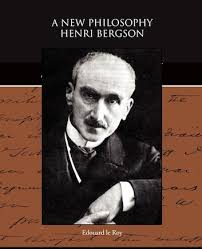Chapter VI — The Problem of Evolution: Life and Matter
byChapter VI opens by challenging one of the most entrenched views in classical philosophy: that perception is internal and subjective. Henri Bergson reverses this assumption, asserting that perception arises at the intersection between subject and object. Rather than treating it as something confined within the observer, he emphasizes its outward-directed nature. According to this view, what we perceive is not an internal reconstruction but a direct connection to reality. This changes the entire framework of knowledge, suggesting that experience is more grounded in the real world than traditionally believed. Bergson labels the idea of perception as “subjective” a linguistic illusion—a misunderstanding rooted in how we speak rather than how we think.
From this foundation, the chapter explores the roots of consciousness and its connection to biological life. Bergson argues that liberty begins not at the level of thought but at the very first stirrings of sensation in primitive life. This is a powerful shift—it means even the simplest forms of life express an element of choice. With sensation comes variability, and with variability, the possibility of freedom. The flow of life is not passive; it responds, adapts, and redefines its direction over time. This outlook leads Bergson to propose that biology, more than mathematics, should guide our understanding of reality. While mathematics captures form and order, biology reflects movement, change, and novelty.
In critiquing Herbert Spencer, Bergson identifies a major shortfall in earlier theories of evolution. Spencer’s interpretation, he says, lacks any true sense of duration—it treats life as a machine progressing from one static point to another. This mechanical reading leaves no room for spontaneity or invention. But Bergson sees life differently. It is not pre-programmed or automatic; it is creative. Each moment of growth, from cell to organism, reflects a new choice, a new unfolding of form. The embryo, for instance, is not simply following instructions but is revealing a history of decisions layered into its being. Evolution, therefore, is not a chain of causes—it is a continuous act of becoming.
The emphasis on real duration becomes central to Bergson’s philosophy. Duration, unlike clock time, cannot be divided without distortion. It flows like a melody, each note shaped by the last and influencing the next. This understanding allows for the presence of novelty—something truly new that wasn’t already embedded in the past. For Bergson, this is where life gains its richness. Evolution is not simply survival but expression. It is the freedom to explore new forms, new paths, new configurations. In this sense, the universe itself becomes a field of ongoing creation rather than fixed laws.
Creative evolution, as Bergson defines it, is more than theory—it’s a method for understanding both nature and ourselves. Liberty is not an illusion but a foundational feature of life. Wherever there is awareness, there is choice, and wherever there is choice, there is creativity. This reframing invites us to rethink what it means to be conscious. No longer must life be viewed through deterministic systems; it can instead be recognized as a dance of spontaneous, meaningful acts. With this comes a renewed appreciation for individuality, not as a byproduct of chance, but as a natural result of evolutionary freedom.
The chapter ultimately positions Bergson’s view of life as one of continual emergence. His is a philosophy of openness—a refusal to close reality into fixed categories. Instead of life being driven by external pressures alone, it is shown to be shaped from within, by an inner push toward expression. This creative push cannot be reduced to physics or chemistry; it transcends them while still working through their forms. Bergson sees this inner drive as the force behind all growth, all organization, and all self-directed movement. To understand life, then, is to follow its rhythm—not to dissect it into frozen parts.
This perspective holds deep implications not just for science and philosophy, but also for ethics and culture. If life is grounded in liberty and creativity, then human society should reflect that reality. Social systems, education, and governance must honor the dynamic, ever-evolving nature of consciousness. Conformity and mechanization threaten to stifle the very freedom that makes progress possible. Bergson’s message is clear: true knowledge comes not from control, but from participating in life’s creative motion. It is through intuition, openness, and responsiveness that we meet reality on its own terms.
In sum, this chapter makes a profound case for re-centering life in our understanding of the world—not as a mechanical process, but as an unfolding act of creative expression. By merging sensation with liberty and evolution with invention, Bergson redefines how we view ourselves and the universe we inhabit. His vision offers not certainty but possibility, not formulas but freedom. And in that freedom, he sees the real pulse of life.

